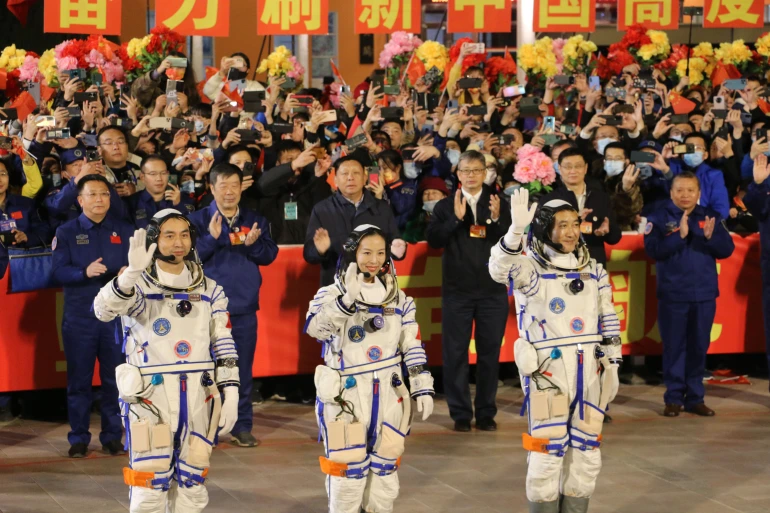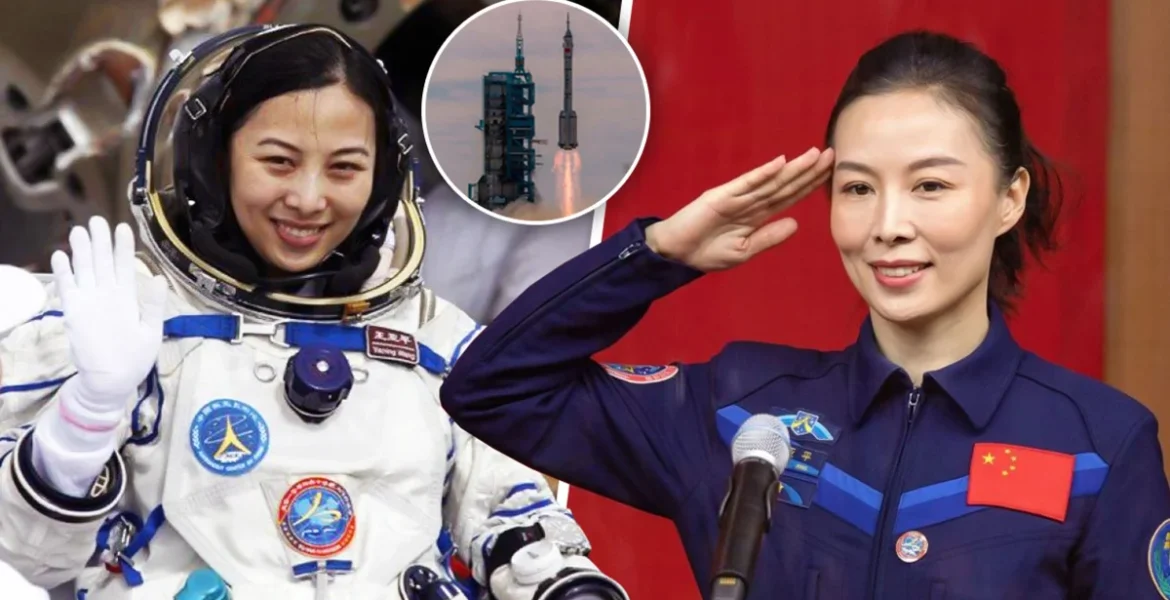Wang Yaping made history on Sunday night as she became the first Chinese astronaut to take a spacewalk with a colleague outside China's new Tiangong space station.
The two astronauts on the three-member crew of the Shenzhou-13 spacecraft, which is docked at the under construction Tiangong space station, successfully completed a 6.5-hour spacewalk, according to CNN and Space.com.
This is the first time Chinese astronauts had left their spacecraft since arriving at the space station on October 16.
Wang is the second Chinese woman in space, after Liu Yang, the first woman to participate in the Shenzhou-9 mission in 2012. Although Wang was in space for the first time in 2013 with the Shenzhou-10 mission, she did not engage in a space walk.
 Overall, 15 women - most of them American astronauts from NASA, have "walked" in space since Soviet cosmonaut Svetlana Savitskaya made her debut in 1984.
Overall, 15 women - most of them American astronauts from NASA, have "walked" in space since Soviet cosmonaut Svetlana Savitskaya made her debut in 1984.
The first Chinese astronaut to take a spacewalk was Zhai Zhigang on-board the Shenzhou-7 mission in 2008.
Zhigang, who is the pilot of the Shenzhou-13, accompanied Wang on her first spacewalk.
Meanwhile the Shenzhou-13 crew is scheduled to make two more space walks during their six-month stay at the Chinese station, longer than any previous Chinese manned mission. The station is expected to be fully manned and operational by December 2022.
RESOURCE | ABOUT THE TIANGONG SPACE STATION
Tiangong (Heavenly Palace),officially the Tiangong space station, is a space station being constructed by China in low Earth orbit between 340 and 450 km (210 and 280 mi) above the surface. Being China's first long-term space station, it is the goal of the "Third Step" of the China Manned Space Program. Once completed, the Tiangong Space Station will have a mass between 80 and 100 t (180,000 and 220,000 lb), roughly one-fifth the mass of the International Space Station and about the size of the decommissioned Russian Mir space station.
The construction of the station is based on the experience gained from its precursors, Tiangong-1 and Tiangong-2. The first module, the Tianhe ("Harmony of the Heavens") core module, was launched on 29 April 2021, followed by multiple crewed and un-crewed missions and two more modules to be launched by 2022.
Chinese leaders hope that research conducted on the station will improve researchers' ability to conduct science experiments in space, beyond the duration offered by China's existing space laboratories.
According to China Manned Space Agency (CMSA), which operates the space station, the purpose and mission of Tiangong space station is listed as: Further development of spacecraft rendezvous technology; Breakthrough in key technologies such as permanent human operations in orbit, long-term autonomous spaceflight of the space station, regenerative life support technology, and autonomous cargo and fuel supply technology; Test of next-generation orbit transportation vehicles; Scientific and practical applications at large-scale in orbit; Development of technology that can aid future deep space exploration.
Operations will be controlled from the Beijing Aerospace Flight Control Center in China. To guarantee the safety of astronauts on board, a Long March 2F with a Shenzhou spacecraft will always be on standby for an emergency rescue mission.
The space station will be a third generation modular space station. First generation space stations, such as early Salyut, Almaz, and Skylab, were single piece stations and not designed for resupply. Second generation Salyut 6 and 7, and Tiangong 1 and 2 stations, are designed for mid-mission resupply. Third generation stations, such as Mir and the International Space Station, are modular space stations, assembled on-orbit from pieces launched separately. Modularised design methods can greatly improve reliability, reduce costs, shorten development cycle, and meet diversified task requirements.
Tiangong is designed to be used for 10 years which could be extended to 15 years and will accommodate three astronauts. Chinese crewed spacecraft use de-orbital burns to slow their velocity, resulting in their re-entry to the Earth's atmosphere. Vehicles carrying a crew have a heat shield which prevents the vehicle's destruction caused by aerodynamic heating upon contact with the Earth's atmosphere. The station itself has no heat-shield; however, small parts of space stations can reach the surface of the Earth, so uninhabited areas will be targeted for de-orbit manoeuvres.
(Source: Wiki)


